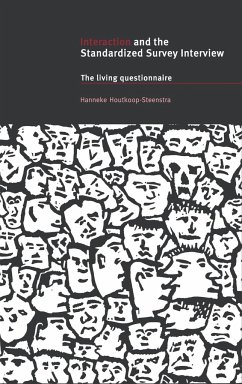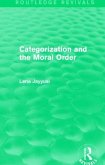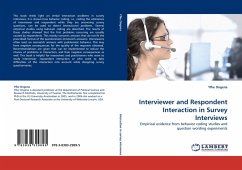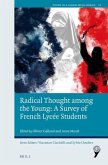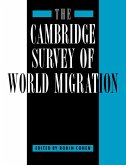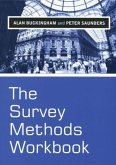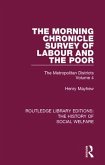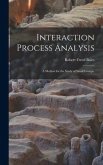This is the first study of its kind to investigate in detail the interaction between interviewers and respondents in standardised social survey interviews. Applying the techniques of conversation analysis, Hanneke Houtkoop-Steenstra reveals how certain rules of normal conversation fail to apply in interviews based on a standard questionnaire, and offers original empirical evidence to show what really happens. Her book demonstrates that interview results can only be understood as products of the contingencies of the interview situation, and not, as is usually assumed, the unmediated expressions of respondents' real opinions. Her conclusions have important implications for anyone interested in effective survey compilation and interpretation. The book is highly accessible, setting out the basic tools of conversation analysis simply and clearly, and suggesting ways of improving questionnaire design wherever possible. Its approach breaks new ground and will be of great interest to students and researchers of survey methodology.
Table of contents:
1. The standardized survey interview; 2. Interviewer-respondent interaction; 3. Participant roles; 4. Recipient design; 5. Questioning turn structure and turn taking; 6. Generating recordable answers to field-coded questions; 7. Establishing rapport; 8. Quality of life assessment interviews; 9. Implications for survey methodology; 10. The cost of flexible interviewing.
This book investigates the interaction between interviewers and respondents in standardised survey interviews. Using conversation analysis techniques, it reveals how normal conversational rules fail to apply in form-based interviews, and offers original empirical evidence to show what really happens. Its conclusions have profound implications for effective survey compilation and interpretation.
Conversation analysis study of the interaction between interviewers and respondents in standardised survey interviews.
Hinweis: Dieser Artikel kann nur an eine deutsche Lieferadresse ausgeliefert werden.
Table of contents:
1. The standardized survey interview; 2. Interviewer-respondent interaction; 3. Participant roles; 4. Recipient design; 5. Questioning turn structure and turn taking; 6. Generating recordable answers to field-coded questions; 7. Establishing rapport; 8. Quality of life assessment interviews; 9. Implications for survey methodology; 10. The cost of flexible interviewing.
This book investigates the interaction between interviewers and respondents in standardised survey interviews. Using conversation analysis techniques, it reveals how normal conversational rules fail to apply in form-based interviews, and offers original empirical evidence to show what really happens. Its conclusions have profound implications for effective survey compilation and interpretation.
Conversation analysis study of the interaction between interviewers and respondents in standardised survey interviews.
Hinweis: Dieser Artikel kann nur an eine deutsche Lieferadresse ausgeliefert werden.

